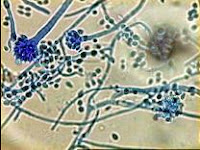Immunoafinity columns followed by high performance liquid chromatography followed by tandem mass spectrometry.
Aflatoxin mycotoxins were first described in the early 1960s as important fungal toxins, which contaminate many different human foods and animal feeds. Accurate and sensitive determination of these carcinogenic compounds immediately became an important requirement to meet food safety concerns and new official legislated regulations. For these reasons, analytical methods for aflatoxins continued to develop over the decades, reflecting advances in analytical chemistry.
Currently, a wide range of methods are available to analytical scientists, ranging from newly described multi-toxin liquid chromatography tandem mass spectrometry to rapid methods based on immunological principles. These latter methods can provide quantitative outputs or a simple rapid determination of contamination level above or below a pre-determined cutoff value.
The newest official methods as validated by Association of Official Analytical Chemists International or Comité Européen de Normalisation rely on immunoaffinity column clean-up of conventional extracts, followed by high-performance liquid chromatography separation of the analogues with detection based on natural fluorescence or the fluorescence generated by various derivatisation methods. In selecting from this range of available methods, the analytical chemist must decide on the requirements of the analysis such that the method chosen is 'fit for purpose'.
Fuente: Shephard GS, Anal Bioanal Chem. 2009 May 31. Pubmed
Fuente: Shephard GS, Anal Bioanal Chem. 2009 May 31. Pubmed
Aporte: Francisca Castro

No hay comentarios.:
Publicar un comentario